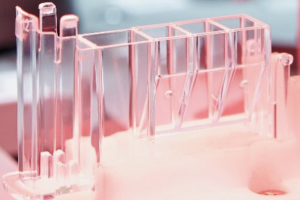Automation makes the cut for specialist jacket manufacturer

A manufacturer has ramped up its use of automation for labour-intensive manual production processes with help from engineers at the Advanced Manufacturing Research Centre (AMRC).
Powertherm Contract Services makes thermal insulation jackets for the power generation and petrochemical industries.
The Sheffield-based company bought an Eastman CNC ply-cutting machine to automate some of its time-consuming processes.
But it needed help optimising its use of the machine. It was only in operation two or three times a month due to not being fully incorporated into the company’s manufacturing process.
The ply-cutter is now used daily following a project by the University of Sheffield AMRC.
Mike Taylor, flexible insulation products division manager at Powertherm, said: “We got in touch with the AMRC whose research engineers produced a very thorough report.
“One of the recommendations was to have a different design program that works better with the machine so we invested in the SolidWorks 3D modelling program.
“Two of us have now been trained on that and we’re making progress. We were using a 2D program before and while there are similarities, the 3D programme goes much further in what it can do.
“It means we are using the ply-cutting machine a great deal more than we were and we have started setting up some user defined tables and inputting data for the different types of covers that we manufacture to create a library of designs.
“For us, the main benefits of this machine are around saving time and maintaining quality.
“We still cut things out by hand because we have nine sewing machines on the shop floor and for the cutting machine to keep churning out enough work to satisfy those nine machinists is quite a big task while we’re still trying to build up the design library.
“But once that library is full, it will contain thousands of designs and will be able to cut more.”
Research engineers from the University of Sheffield AMRC’s Composite Centre visited Powertherm’s Handsworth factory to evaluate its process for making glass fibre insulated jackets.
They found that while this involves skilled operatives cutting fabric by hand, they largely work to paper drawings which means the company doesn’t have the digital drawings of designs required by the machine.
A number of recommendations were made by the AMRC team to help Powertherm better integrate the ply-cutter into day-to-day operations, including trialling the use of computer assisted design (CAD) tools to create a model able to generate digital product designs to be interpreted by the ply-cutter.
Calum Dickinson, research engineer at the AMRC Composite Centre, said: “We think this would be possible for about 30-40 per cent of what they currently manufacture and would definitely mean a reduction in production time.”
During the visit, he and the team found that the ‘made-to-measure’ nature of the jacket manufacture process posed a number of challenges when considering digitalising operations.
Dickinson said: “At the moment, the glass fabrics are cut out by hand with operatives working to a job card and paper drawing of what they are supposed to be cutting out.
“The process works but it also means they can’t just jump straight onto the Eastman CNC ply-cutter and use it because they don’t have the digital drawings of these jacket designs which the machine requires.
“The process is very labour intensive and because of the bespoke nature of the products, the design stage of the process is quite a large proportion as it’s done for every single product made.”
“We have clearly seen areas where they can make changes and save on time, material and, ultimately, on cost.”
Alongside the AMRC report recommending the next steps, he and the team hosted a workshop held to show Powertherm the next stages to explore once it has digital files for its fabric pieces.








